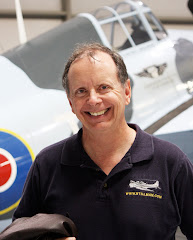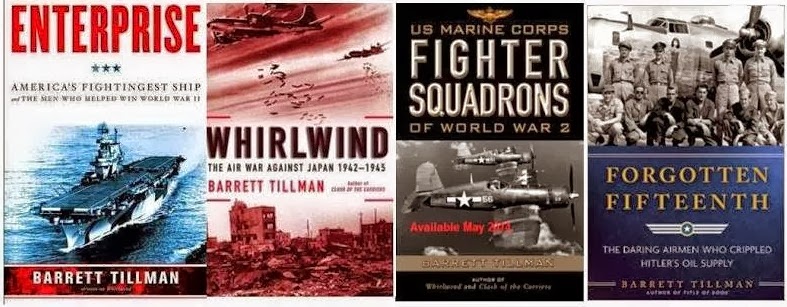The movie of the season is Roland Emmerich’s revistation of the Battle of Midway, released last month. Being more than somewhat familiar with that historic event, and a sometime reviewer, I’m devoting this month’s blog to Hollywood’s treatment of the epic WW II naval battle.
Background:
In June 1942 the Imperial Japanese Navy launched a major effort to capture Midway Atoll some 1,200 miles northwest of Oahu. Occupying two sand spits was less important than destroying America’s remaining aircraft carriers and thereby—presumably—forcing a settlement with Washington. Never mind that it was never-ever going to happen.
Short version: the operation turned to hash for the Japanese. They lost all four aircraft carriers committed to the effort, plus a large cruiser, versus one U.S. flattop and a destroyer. Midway was one of the significant battles of history, as it ended Japan’s strategic initiative and set the stage for America’s oceanic trek ending in Tokyo Bay three years later.
Hollywood’s first treatment of Midway remains the best in some ways. Task Force debuted in 1949 with full Navy cooperation, tracing the development of carrier aviation from 1922 into the jet age. The perspective is two fictional fliers: Walter Brennan (a thinly disguised Admiral Marc Mitscher) and Gary Cooper representing a tailhooking everyman.
Director Delmer Daves was a versatile writer-director whose credits included Pride of the Marines, (John Garfield and Eleanor Parker, 1947) Dark Passage, (Bogart and Bacall, 1947) and Spencer’s Mountain (Henry Fonda and Maureen O’Hara, 1963.) The Midway portion of Task Force is relatively short and somewhat condensed to the point it’s hard to distinguish USS Enterprise from her sister Yorktown, sunk in the battle. But the film was shot aboard real-live carriers with real-live airplanes: a Dauntless dive bomber and a Wildcat fighter.
Brennan delivers the movie’s best line. While awaiting a contact report on the enemy fleet, he turns to Cooper and asks, “Do you know any satisfyin’ profanity?”
Coop of course did not, but events unfold in the film pretty much as in fact. Largely lost on the audience is appearance of Wayne Morris, a genuine navy fighter ace, as a torpedo bomber pilot who barely survives the Midway massacre.
Lapse-dissolve, fade in three decades later…
If there’s a worse navy film than Midway 1976, I’ve not seen it. Writer Donald Sanford’s previous credits included Submarine X-1 (1968) and The Thousand Plane Raid (1969) so presumably he knew something about World War II but it’s not evident on screen.
Reputedly director Jack Smight flew with the Army in the Pacific but again, there’s no proof. Mainly he worked on a variety of TV programs though he directed an early disaster movie, Airport 1975.
Midway ’76 remains a different type of disaster.
Despite the all-star cast with Charlton Heston, Henry Fonda, Glenn Ford and Robert Mitchum, the plot is convoluted, folded, spun and mutilated. The carrier phase of the battle stretches into two days for no apparent reason.
Film editing is appallingly bad, in no way retrieved by the Sensurround gimmick accompanying explosions and stuff. Near the end Heston’s Dauntless morphs into a Helldiver (18 months early) into my late friend George Duncan’s F9F Panther (read: jet) that explodes on landing. There’s also a 1960s Forrestal class aircraft carrier. Ferpetesake.
Absolutely the worst performance is Hal Holbrook as code breaker Commander Joseph Rochefort. Holbrook gained acclaim for his Mark Twain one-man shows but in Midway he plays Samuel Clemens playing a hayseed Rochefort lurching toward victory.
There’s also a pointless and unlikely Navy-Nisei romance that only detracts from the narrative flow.
Short version: I counted something north of 70 factual and technical errors, the huge majority being avoidable. Yes, in the 1970s computer graphics were unavailable but just a bit of judicious film selection would’ve gone a long-long way.
Now, as to this year’s release: OK, it is not terrible. Certainly it is immensely better than Smight’s miserable product.
The Battle of Midway community—and there is such—was distraught at Woody Harrelson as Pacific Fleet commander Chester Nimitz. Part of the reaction was due to Harrelson’s fame as the not-so-bright Cheers bartender. But while I was prepped to hate the portrayal, I came away admiring the performance.
Patrick Wilson is excellent as intelligence officer Edwin Layton, and Brennan Brown is immensely more credible than Twain-Holbrook as crypto genius Rochefort.
I knew four of the people portrayed in the movie: dive bomber squadron commander Dick Best, his daughter Barbara, his radioman-gunner Jim Murray, and Jimmy Doolittle. Briton Ed Skrein captures Dick’s focused intensity without having known him (Dick died in 2001) although Emmerich owes Dick a posthumous apology for the hyena-gagging introduction when Best dives near vertically on the Enterprise, shuts down his engine, dips below the flight deck, pops up and lands without lowering his flaps. Not only is that stunt impossible, it gives missions of viewers the impression that one of the most professional naval officers of his era was a hotdogging flyboy.
Dick’s back-seater was Chief Radioman Jim Murray who in the film is demoted to a tense, uncertain newbie rather than the veteran that he was.
Aaron Eckhart is too tall and too hairy to resemble “General Jimmy” but his selection is galaxies better than foul-mouthed Alec Baldwin’s miserable casting in the egregious Pearl Harbor.
Unlike Smight’s version, which tried covering all the bases, Emmerich almost exclusively limits himself to the Enterprise from Pearl Harbor onward. Having written a lengthy Big E “biography” (see February 2012) and knowing dozens of her veterans, it’s a subject close to my heart. But history is ill served in Wes Tooke’s script, which barely acknowledges that Enterprise’s sisters Yorktown and Hornet were engaged at Midway, with “Yorky” being sunk.
Emmerich is known for blockbusters dating from Independence Day (1996), often relying on computer-generated imagery. Midway’s CGI ranges from mediocre to good, with ships better done than planes. Some of the aircraft perform maneuvers that defy credibility as well as gravity, but that’s not unique.
The Japanese are fairly well portrayed, especially Etsushi Toyokawa as Admiral Isoroku Yamamoto.
There are dozens of “gotchas” in the film, many noted by the consultants and obviously ignored. One of my lesser gripes is based on some 500 hours in open-cockpit airplanes: nobody flies with his helmet's chin strap unfastened. Yet Kommodore Emmerich’s fliers routinely do so. (Attempting added credibility, I’ll note that I’m probably the only Midway movie reviewer with flight time in a Dauntless.)
Those reservations aside, Midway ’19 helps correct the cinematic record begun so well in 1949 and miserably fumbled in ’76. Internet comments about the “great” 1976 version merely remind us that some people have no business expressing their opinions but hey—it’s still a relatively free country.
Which is partly what Midway was all about.



